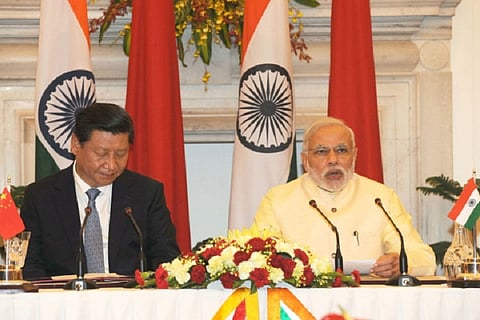

“This is time to weaken Chinese economy, which we can do. Coz India is the biggest market for the China across the globe. China is making a business of 6.2 million crore of Indian rupees per annum from Indian market. And as we know China is claiming Indian territory and acquiring border areas, it seems that China is always in war stance with India. Also China is supporting Pakistan openly to counter India to become a sub-continental leader…”
"Please take a Oath, not to use Chinese goods .....
Ban Chinese things ... Save our country...."
Welcome to the world of ‘WhatsApp activists’ who’ve taken such messages rather seriously, who’ve stepped up calls for a boycott of China, after it blocked India’s attempt to designate Pakistan-based Jaish-e-Mohammed leader Masood Azhar a terrorist at the UN.
However, anonymous social media forwards aren’t the only ones calling for a ban on Chinese goods.
Even political leaders, several of them from the BJP or parties allied with it, are appealing for a boycott of "Made in China" goods. They include Sharad Yadav of Janata Dal (United) from Bihar, Himanta Biswa Sarma, the newly-inducted Finance Minister of Assam, and Anil Vij, Health Minister of Haryana.
But, is it really possible to boycott Chinese products?
Numbers suggest it’s not going to be easy and even impossible to quite an extent.
For starters, China hit a record high of sales of its products in India in October, reported Global Times:
“Sales figures for Chinese products on the top three Indian online retailers in the first week of October hit a new record. Amazingly, the Chinese mobile phone company Xiaomi sold half a million phones in just three days (on e-commerce platforms)”.
And Prime Minister Narendra Modi seems to know the boycott is not going to work because at the recent India-China Strategic Economic Dialogue held on October 7, India and China agreed to co-operate on various issues including tapping into the international energy market, modern infrastructure, automobiles and more.
“With India aiming to increase the share of manufacturing in GDP from 16% now to 25% by 2025, it is giving special stress on Chinese companies to set up manufacturing units in the country as it is not feasible for India to remain only a client country,” said NITI Aayog Vice Chairman Arvind Panagariya who led the meeting, as per a report in Indian Express.
Abhishek Waghmare’s analysis on IndiaSpend shows that China is India's largest trade partner: a sixth of India's imports are Chinese, up from a 10th in 2011-12, while India's exports to its rival have halved over the same period.
Imports from China grew at 20% over two years and 5 per cent over five years, to $61 billion. These goods range from power plants and set-top boxes to Ganesh idols.
This is despite the fact that India's imports have generally fallen over the last five years – from $490 billion (Rs 23 lakh crore) to $380 billion (Rs 25 lakh crore) – because of a fall in global oil prices.
India's exports to China have fallen from $18 billion (Rs 86,000 crore) in 2011-12 to $9 billion (Rs 58,000 crore) in 2015-16. This means that India buys six times the merchandise it sells to China.
Cellphones, laptops, solar cells, fertilisers, keyboards, displays and communication equipment, including earphones – these are India's chief imports from China, according to IndiaSpend’s analysis of Ministry of Commerce data. Other major imports from China include tuberculosis and leprosy drugs, antibiotics, children's toys, industrial springs, ball bearings, LCD and LED displays, routers, TV remote controllers and set top boxes.
But stagnating indices for the manufacturing sector show that India is still struggling to compete with China. Despite a record foreign direct investment of $55 billion in 2015-16, private investment in manufacturing is still sluggish.
These figures suggest that although political relations between the two countries have soured from time to time, economic relations have continued relatively undisturbed. Contrary to what WhatsApp and social media forwards urge, it appears India stands to gain more from maintaining and boosting economic ties with the Dragon than severing them.
With IANS inputs